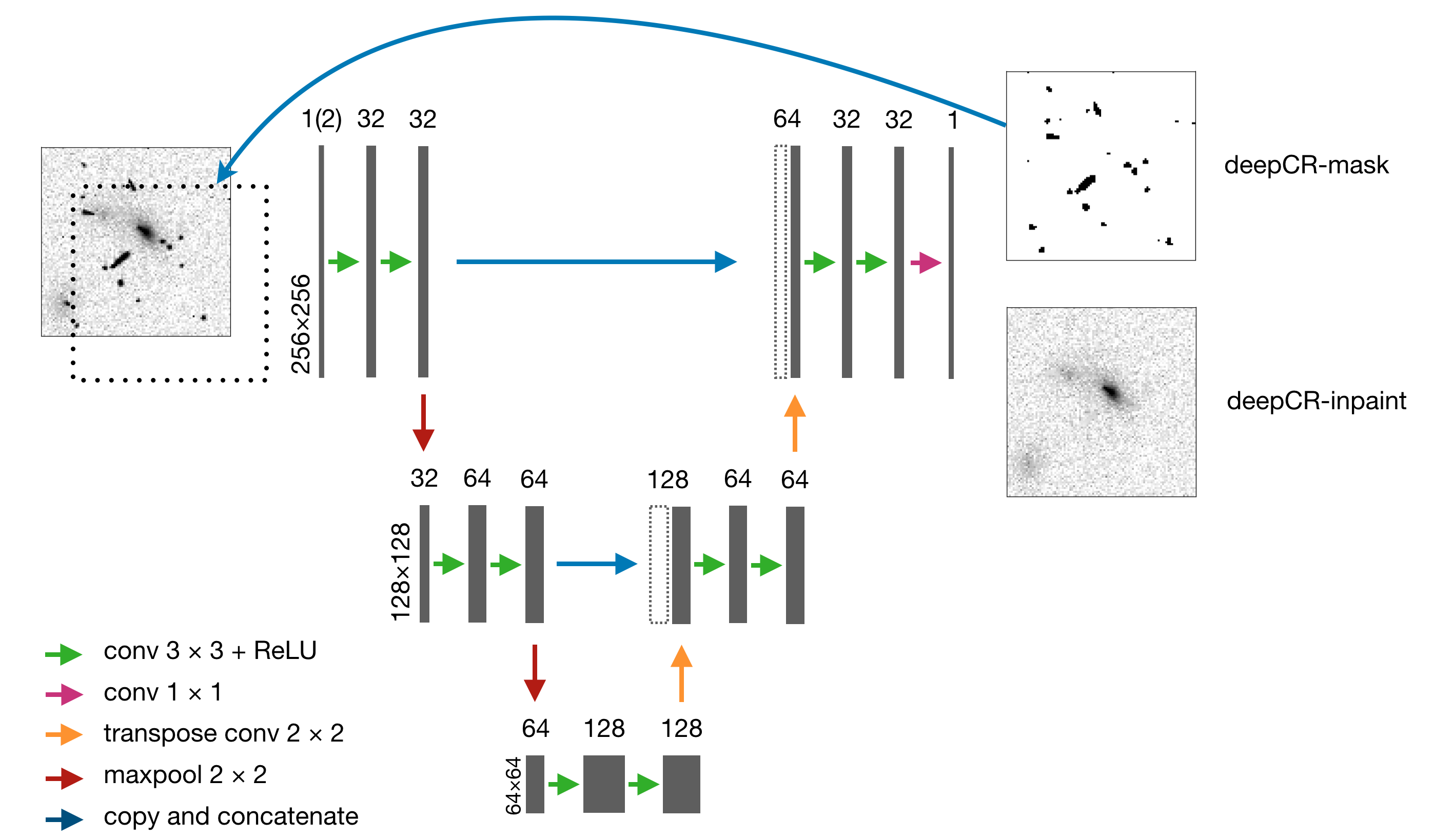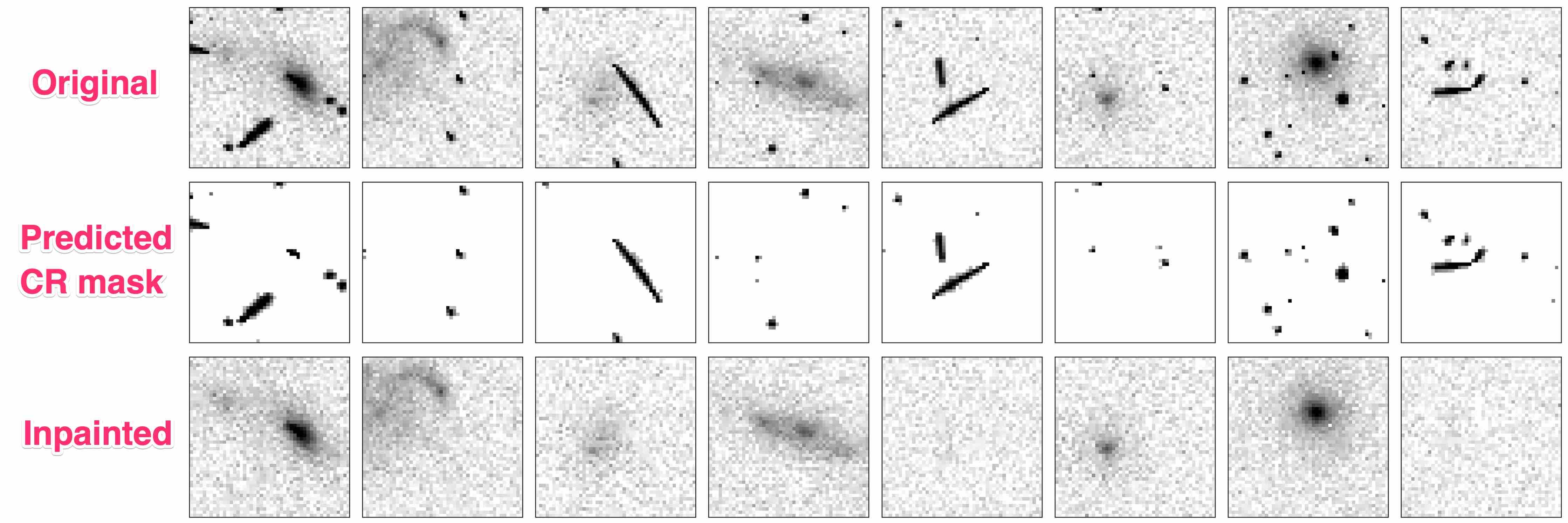| title | tags | authors | affiliations | date | bibliography | aas-doi | aas-journal | ||||||||||||||||||||||||||||||
|---|---|---|---|---|---|---|---|---|---|---|---|---|---|---|---|---|---|---|---|---|---|---|---|---|---|---|---|---|---|---|---|---|---|---|---|---|---|
deepCR: Cosmic Rejection with Deep Learning |
|
|
|
15 August 2019 |
paper.bib |
10.3847/1538-4357/ab3fa6 |
Astrophysical Journal |
Astronomical imaging and spectroscopy data are frequently corrupted by "cosmic rays" (CR) which are high energy charged particles that are instrumental, terrestrial, or cosmic in origin. When such particles pass through solid state detectors, such as charged coupled devices (CCDs), they create excess flux in the pixels hit which lead to artifacts in images. These artifacts must be identified and either masked or replaced, before further scientific analysis could be done on the image data. It is straightforward to identify these artifacts when multiple exposures of the same field are taken. In such cases, a median image could be calculated from aligned single exposures, effectively creating a CR-free image. Each one of the exposures is then compared with the median image to identify the cosmic rays. However, when CCD read-out times are non-negligible, or when sources of interest are transient or variable, cosmic ray rejection with multiple exposures can be sub-optimal or infeasible. These cases would require specialized algorithms to detect cosmic rays in single images.
deepCR is a Python package for single frame cosmic ray rejection which is
based on deep learning and written with the Pytorch framework [@pytorch].
Since deepCR is based on deep learning, different models trained on
data taken with different instrument configurations are required, when applied to different
data. The current version of deepCR is prepackaged with model for Hubble
Space Telescope ACS/WFC imaging data, and we expect models available
to grow with contribution from the community. We plan to host a "model zoo"
which enables deepCR to work across different instrument configurations.
The API of deepCR includes functionality for both applying models and
training models. To apply an available model, deepCR takes in an input image
and produces a cosmic ray mask and an "inpainted" image, with
the artifact pixels replaced with deepCR predictions. To train a new model,
users would feed in custom dataset to the training API, which is automated.
deepCR works with both CPU, which is well-threaded at application time, and GPU.
On GPU, training a new model takes as short as 20 minutes,
while applying deepCR on a 10 Mpix image requires less than 0.2 second,
orders of magnitude faster than current state of the art LACosmic [@lacosmic].
In the paper accompanying deepCR [@deepcr], the authors showed that
on Hubble Space Telescope (HST) ACS/WFC data,
deepCR is more robust, and at least as fast as the current
state-of-the-art single frame cosmic ray rejection package, LACosmic. The API
of deepCR serve as a drop in replacement for LACosmic,
so that users may experiment with different packages easily. At
reasonable false detection rates, deepCR achieved near perfect
cosmic ray detection in extragalactic and globular cluster fields, and above
90% in more difficult dense stellar fields in nearby resolved galaxies.
Since HST imaging is among the hardest cosmic ray rejection to be
solved, deepCR would work well across many different instrument set-ups,
including ground based imaging and spectroscopy. The combination of
speed and accuracy of deepCR allows astronomers to potentially save
large amounts of precious observational and computational resources.
This work was supported by a Gordon and Betty Moore Foundation Data-Driven Discovery grant, and has made use of the following software:
astropy [@astropy]; astrodrizzle [@astrodrizzle]; numpy [@vdw11]; scipy [@scipy]; matplotlib [@matplotlib]; astroscrappy [@astroscrappy]; pytorch [@pytorch]; Jupyter [@jupyter]; Scikit-image [@scikit-image]

